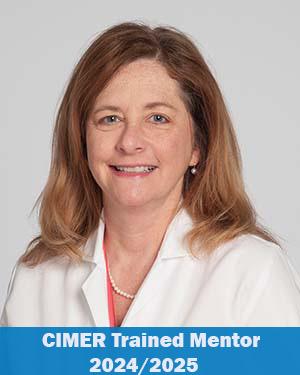Research News
05/03/2023
Study on breast cancer regulators finds potential strategies to reduce severity, improve treatment options
Breast cancer often relies on characteristics of healthy breast cell development, and the developmental regulator TLE3 could play a role in suppressing the spread of breast tumors.

The five-year survival rate for breast cancer is over 90% when it’s localized. But, if the cancer begins to spread to other parts of the body, that survival rate drops.
Discovering how breast cancer is spread can reveal clues for developing new therapies by making cancer cells act more like their healthy breast counterparts. Such clues can come from identifying how genes that control normal breast development are turned on and off in breast cancer.
Ruth Keri, PhD, Cancer Biology, and her team published a study in Cancer Research showing that TLE3, which controls development of the normal breast, can prevent activation of genes that lead to the spread of breast cancer. This new information could help prevent or screen for breast cancer that is more likely to spread.
“To block the behaviors of cells that lead to the cancer invading tissues and structures outside of the breast, we have to understand why the cells do it – that’s why identifying and exploring TLE3 is so important,” Dr. Keri says.
TLE3 is a transcription factor, meaning it turns certain genes on and off in cells. Dr. Keri’s team found that when TLE3 is present, it turns off genes associated with a very aggressive form of breast cancer. By forcing the expression of TLE3, these cells have reduced ability to spread to other tissues, which could also make them more treatable.
“This finding provides insight into what we call plasticity – how flexible cancer cells are when moving from one state to another, or from being able to spread throughout the body or not – and what controls that flexibility,” says Dr. Keri, who is also Associate Director for research at Case Comprehensive Cancer Center.
In this case, increasing the amount of TLE3 may take advantage of the flexibility of cancer cells and force them from a more aggressive to a less aggressive state, which would help improve outcomes for patients.
“What we determined is that TLE3 makes sure a patient’s breast cancer doesn’t go back and become this more aggressive type,” Dr. Keri says. “Right now, we are not able to target TLE3 with drugs, but we hope to identify all of the genes that it controls. By doing so, we expect that one or more of them will be ideal targets for drug development."
Featured Experts
News Category
Related News
Research areas
Want To Support Ground-Breaking Research at Cleveland Clinic?
Discover how you can help Cleveland Clinic save lives and continue to lead the transformation of healthcare.
Give to Cleveland Clinic